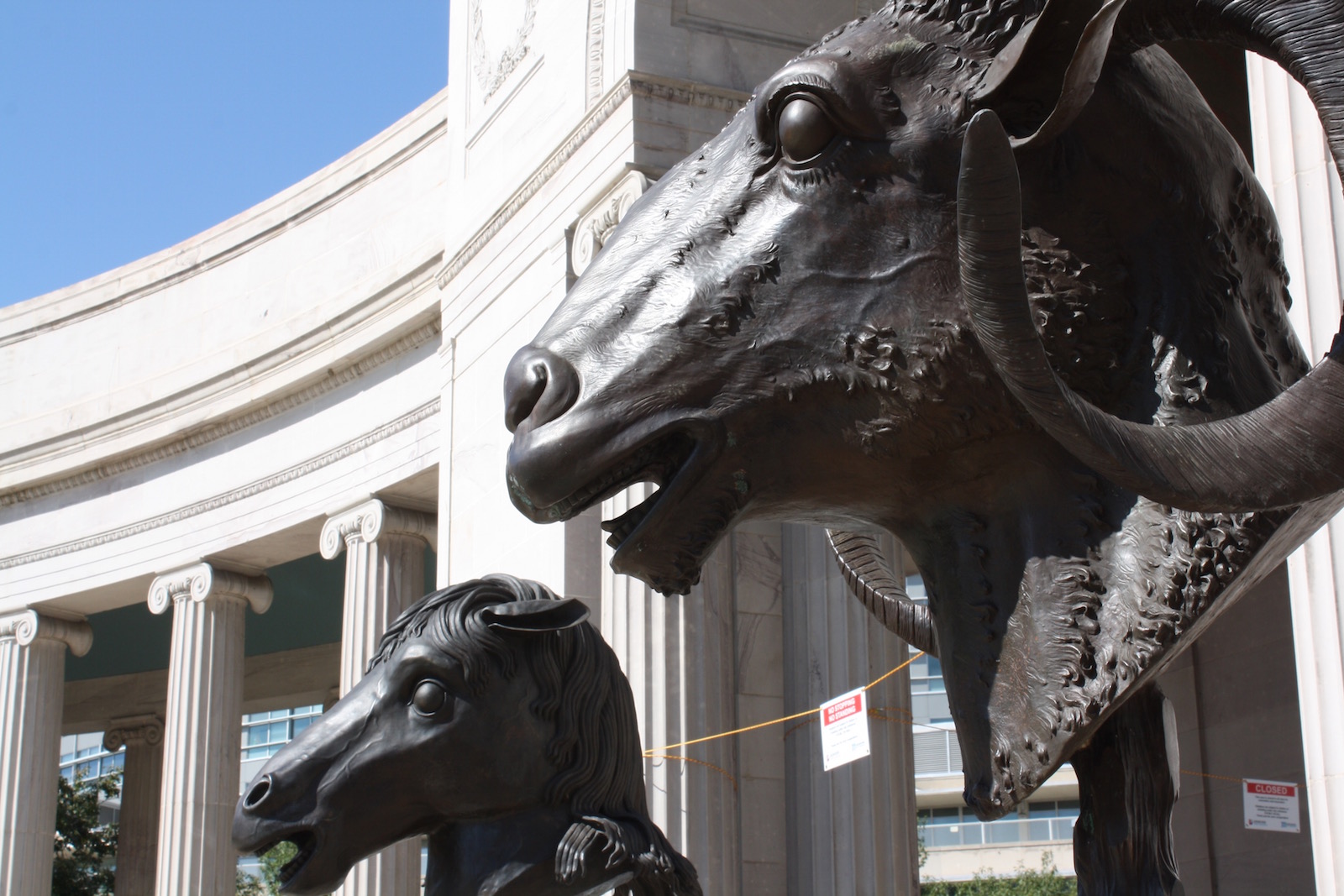The Local newsletter is your free, daily guide to life in Colorado. For locals, by locals.
Not even the city employees who answer Denver’s 311 calls knew what was going on in Civic Center Park this past Wednesday morning. A crane was parked outside of the Voorhies Memorial Sea Lion Fountain, and it towered over Civic Center Park’s north side. Temporary fencing surrounded the crane and the pond, and within it stood several massive, bronze animal heads—each of which were situated atop a pole and began forming a semicircle around the pond. A few passersby joked that it looked like something out of the “Hunger Games” films.
As people recognized the sculptures as animals from the Chinese Zodiac, confusion soon turned to excitement as local residents pointed out their own signs. The sculptures are the work of Chinese artist Ai Weiwei and make up his global exhibit, “Circle of Animals/Zodiac Heads,” which will call Civic Center Park home until October 2018 as part of “A Year With Weiwei.” The exhibit as a whole is a joint effort between Denver Arts & Venues and the McNichols Civic Center Building.

Weiwei is a legendary Chinese artist known for being a champion of free speech and freedom of expression—beliefs for which the Chinese authorities arrested and detained Weiwei for 81 days in 2011. In one sense, “Circle of Animals/Zodiac Heads” is a playful re-creation of the 12 animals of the Chinese Zodiac: the rat, ox, tiger, rabbit, dragon, snake, horse, sheep, monkey, rooster, dog, and pig.

“Ai Weiwei’s sculptures are really a reimagining of the Chinese Zodiac,” says Denver public Art Administrator Rudi Cerri. “They are much more than a mere copy of the original sculptures.”
But Weiwei’s art is also based off real sculptures made by Europeans that were stolen from China in the 18th century. Although China has, in recent years, tried to promote these sculptures as a Chinese national treasure, Taliesin Thomas, who curated the display, says Weiwei disagrees. To WeiWei, Thomas says, the fact that the original sculptures were made by foreigners for a Manchurian ruler leave the Chinese with little grounds to claim the zodiac sculptures. The Chinese have actually tried to keep those sculptures only in China, which prompted Weiwei to create his own for an international audience.
He created more than a dozen editions of the zodiac sculptures. There are six editions of the bronze statues—one of which is in London; the others are in private collections—which weigh about 2,000 pounds and are 5 feet tall. He also made eight versions of smaller, gold sculptures. His project launched in New York City while he was being detained during May of 2011. In what Thomas agrees is a sort of middle finger to the Chinese government, Weiwei’s sculptures have graced more than 40 international cities since it launched.
Denver is the only American city that currently has the bronze sculptures displayed publicly, Thomas says. A ribbon-cutting event will take place on October 17 in Civic Center Park. It will run from 5:30–7:30 p.m., and Thomas will speak at the event to discuss Ai Weiwei’s work in the context of art and social change.








